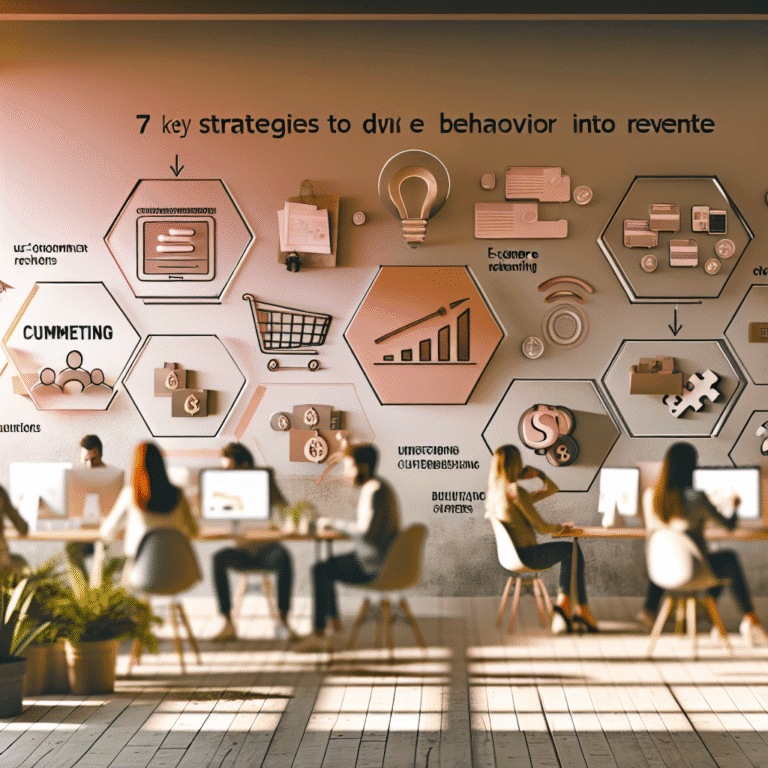The Story Your Dashboard Can’t Tell
Picture this: you're staring at endless dashboards, reports thicker than a Dickens novel. Bar charts with more colours than a Crayola factory.
And yet. Nothing changes.
The spreadsheet on its own is as persuasive as a teapot in the desert. Clicks, carts, bounce rates — these numbers don’t argue your case. They just sit there, silent. Cold.
Rather than collecting more data, what drives ecommerce growth is turning that data into stories that spark action. Welcome to data-driven storytelling in ecommerce, where numbers meet narrative, and dashboards finally deliver.
What Data-Driven Storytelling Means
Back to those dry decks with charts — they’re more common than we'd like to admit in ecommerce. But a real data story does something much cleverer. It gives the numbers a pulse.
Smart ecommerce analytics don't merely show what’s happening; they explain why it matters. They give context and expose the meaning hiding in the stats.
Here's how it works in practice:
- Launching products with a sense of urgency and relevance
- Explaining conversion rate optimisations so they stick
- Writing email blasts that feel downright human
- Turning spreadsheet data into campaigns people actually enjoy
For example:
❌ “We improved bounce rate by 23%.”
✅ “Before we simplified the menu, mobile visitors hesitated and left. Now they browse, stay, and buy.”
One talks numbers. The other tells a story.
Why We Need Better Storytelling in Ecommerce
Data is everywhere — thanks to AI, tracking tools, and sophisticated models. But turning it into actionable insights? That’s where many stall.
In crowded markets, your competition might have the same tricks up their sleeves. The differentiator isn't the data itself; it's the story you spin with it.
While your dashboards might scream “insight overload,” what your business truly needs is clarity.
Crafting a High-Impact Data Story
Here's a recipe for success. Whether you’re crafting a deck, writing copy, or trying to convince your boss to tweak the mobile site, this framework helps drive growth.
1. Know Your Audience
Behind every chart is a person. Your data must shift depending on who's in the room:
- Execs? Talk about risks and rewards.
- Developers? Focus on technical hiccups and fixes.
- Marketers? Showcase behavioural changes and reach.
- Customers? Show them how your changes benefit them.
Speak as though you’re talking to one person. Tailor your tone and details accordingly.
2. Start with Trouble
Good stories start with conflict, not resolution.
Find the challenge and highlight its costs.
“Mobile conversion is 38% lower than desktop, even though it gets 65% of our traffic. We’re spending on clicks that don’t become customers.”
That’s not a stat. It’s a plot twist.
3. Focus on One Strong Insight
Attention is limited. Pick an insight that changes perspectives instead of drowning people in stats.
If they only remember one thing, make it count.
4. Make the Stakes Human
Don’t say “engagement increased.” Tell them, “We’re missing £14,000 a month because our filter design keeps customers from browsing.”
Turn numbers into something personal, urgent, and very human.
5. Offer Clear Next Steps
Wrap up your story with an action that feels not just sensible, but unavoidable.
“Move the CTA above the fold,” or, “Divert 20% of our traffic budget to Product B.”
See? Simple yet compelling.
Here’s a cheeky example:
“Users who use search convert 60% better. Yet, our design hides it. Fixing this could net us £42,000 monthly.”
Now that’s a story with a villain, a hero, and a sequel worth the ticket.
10 Ways to Add Data Storytelling to Your Ecommerce Game
Let's keep it practical. These tactics fit right into your weekly routine.
1. Use Behavioural Clues to Fine-Tune Product Pages
Use heatmaps and scrolling data to spot hesitation. Are they stuck at product specs? Convert specs into benefits. Are they quitting above the reviews? Move the social proof up.
2. Frame CRO Tests as Behaviour Changes
Don’t just report a win — tell a story:
“When we added delivery reassurance before the CTA, users clicked faster and with less hesitation.”
3. Back Homepage Redesigns with Strong Stories
Headed to a stakeholder meeting? Arm yourself with a story:
“By moving the core message above the fold, we slashed bounce rates by 22% in 10 days.”
You're not asking for approval. You’re showing inevitability.
4. Bring Segments to Life
Don't let personas become dull codes. Add personality.
Not “Segment B25-49.” But:
“Urban professionals browsing luxury skincare at 11pm, using Klarna, and buying after their third visit.”
5. Write Descriptions That Inspire
Dig into reviews, support tickets, and sales data. What worries or delights customers?
“A compact fit for studio flats” will hit harder than “dimensions: 27cm x 33cm.”
6. Create More Effective Retargeting Campaigns
Analytics gives insights into behaviour:
“These are window shoppers spending 4 minutes on high-ticket items but never adding to cart.”
That opens the door for emotional angles like FOMO or reassurance.
7. Empower Influencers with Story
Data can sharpen your influencer briefs.
“Your followers love unboxing reels with ASMR audio, plus first-time buyer tips.”
Give them a plot to work with.
8. Refine Email Flows with Behavioural Nudges
Plain CRM stages are passé. Storytelling wins:
“You’ve browsed three times but haven’t added to cart. Need help deciding?”
9. Win Budget with UX Stories That Count
Think analytics can’t open wallets? Try this:
“Our cart drop-off at step 3 costs us £114 per user. It happens 1,000 times a week. That’s half a million a quarter.”
Now that’s not a request. It’s an urgent issue.
10. Tune Your About Page with Relevant Market Stories
Even the humble About page needs a story.
Not your traditional origin tale, but tied to what people care about now:
“Skincare for minimalist mornings. Born during lockdown, designed for busy lives.”
Data Talks, Stories Persuade
In its essence, data storytelling isn’t about collection. It’s about interpretation.
You’re more than a reporting machine. You’re the narrator, the one who brings meaning.
Data attracts attention. Stories create action.
Next time you pen a presentation or a product page, don’t just stop at numbers. Frame the moment, show the stakes, and invite action.
Why?
Because no one's rallying for a bounce rate chart.
But they will back this:
“We’re losing £100,000 every quarter, not due to traffic, product, or price, but because we hid our best feature behind a poor user interface.”
Start today by turning one cold data point into a story worth acting on.
Turns out, ecommerce growth comes from connecting the dots, not just counting them.





